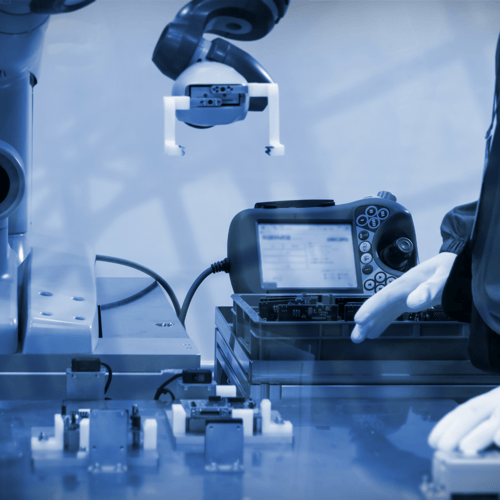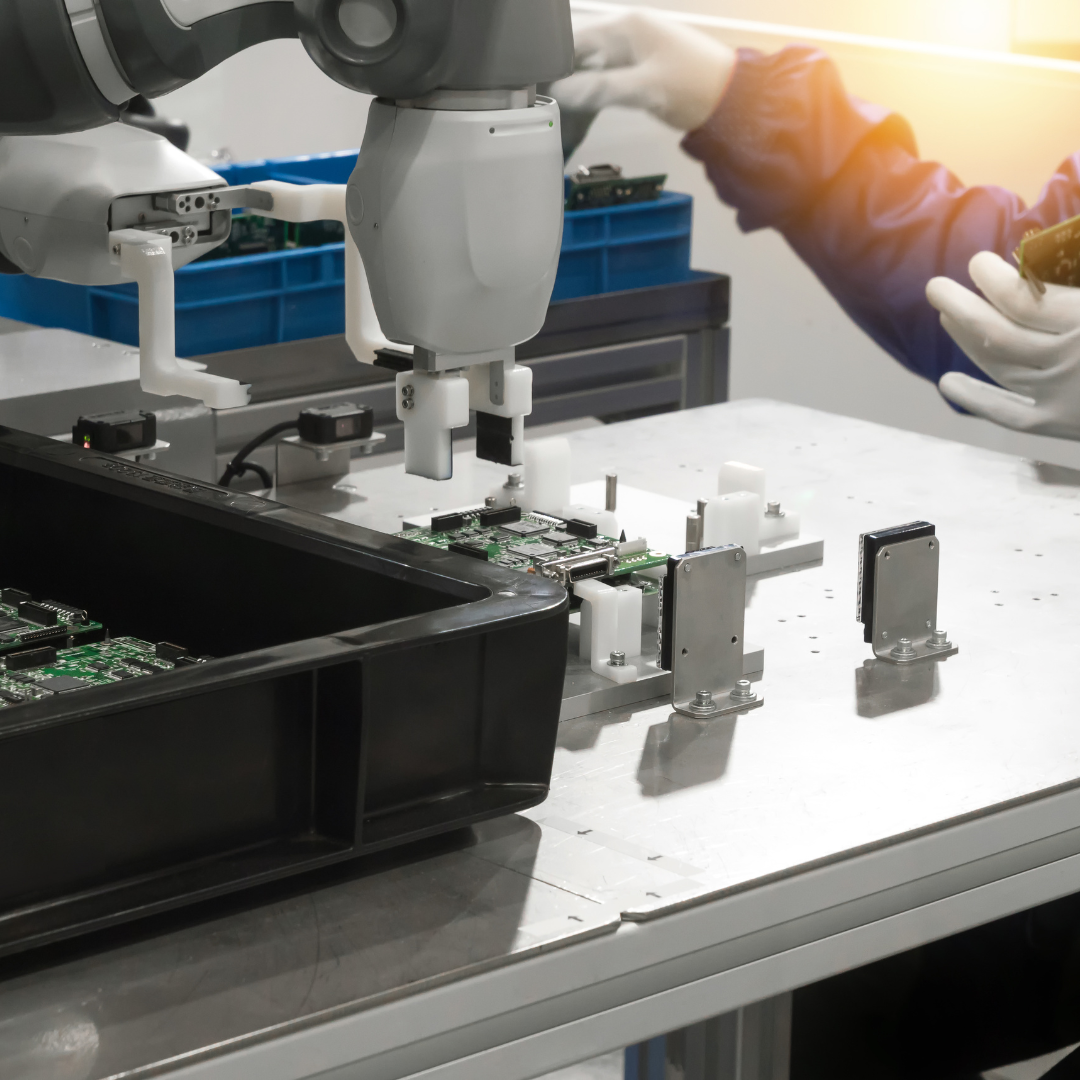Cobots in Manufacturing
Introduction
Cobots are a new version of mechanized assistance. These cobots (collaborative robots) are machines that can work alongside individuals to assist them in their tasks. These robots have become popular after the pandemic with limited manpower available. With cobots, several tasks in manufacturing are faster and more efficient while carried out in a safe and controlled environment.
Different from the robots we usually see in the manufacturing industry, cobots do not need separation from humans, unlike conventional robots used in manufacturing. It is entirely safe for production workers to work near these cobots. And while they do require an amount of human input, an operator of a cobot can typically be working multiple manufacturing processes thus allowing facilities to rely more on working smart instead of working hard. Studies have shown that retention of skilled employees and operators is typically increased when workers have the ability to rotate their work instead of doing a single task.
General Motors Robotics Center was one of the first adopters of cobots back in the early 90s. Humans could provide the necessary power to the cobots, allowing them to function better and quicker and steer the machines as required. The cobots used during these tests placed the objects with precision. Fast forward to modern days, GM is still a leader in the adoption of robotics, innovation and technology in their manufacturing process.
Over years of innovation and advancements, cobots have evolved allowing them to have:
- Orientation Capabilities
- More Precision
- Human Imitation Capabilities
- Faster Reaction Times
- Better Movement Patterns
These cobots will play a vital role in all aspects of manufacturing, making them one of the most awaited market changes.
Read more 7 Steps to Choosing the Right Machine Tool
Cobots in Manufacturing: Practical Applications Today

There are various applications cobots have in different industries—let's discuss manufacturing specifically.
Assembly
The cobots are slightly less efficient than robot arms in efficiency along the assembly line. However, there are several areas where cobots are a better option than traditional robots. For example, these cobots are best for joining tasks, such as
- Welding
- Screwing
- Inserting
- Dispensing
Material Handling
Material handling is often a concern when it comes to occupational health and safety. Cobots can minimize some of the health risks associated with material handling by assisting with tasks such as:
- Stacking
- Palletizing
- Moving heavy materials
- Lift and transport material
Additionally, cobots are perfect for more complicated tasks like CNC machining or electro-polishing, making them exceptional machine tools for many industries.
Testing and Inspection

Cobots can assist with the quality control checks in the manufacturing process and ease it. It can include incrementally tracking the assembly progress or testing for different checks. Some common ones include, but are not limited to:
- Probing and gauging
- Presence/absence monitoring
- Identification and marking
The Future of Cobots in Manufacturing
The cobot market showed a fantastic growth of 40% in 2022 – experts recommend by 2025, this percentage could quickly grow further. The main reason for the popularity of these cobots is their increased capabilities. Several companies, such as FANUC have upgraded controls to increase cobot performance which can help reduce automation investments and increase output. Additionally, the reduced market prices of cobots have made the robots accessible for smaller industrial shops.

.png)

